Amazon Product Listing optimization
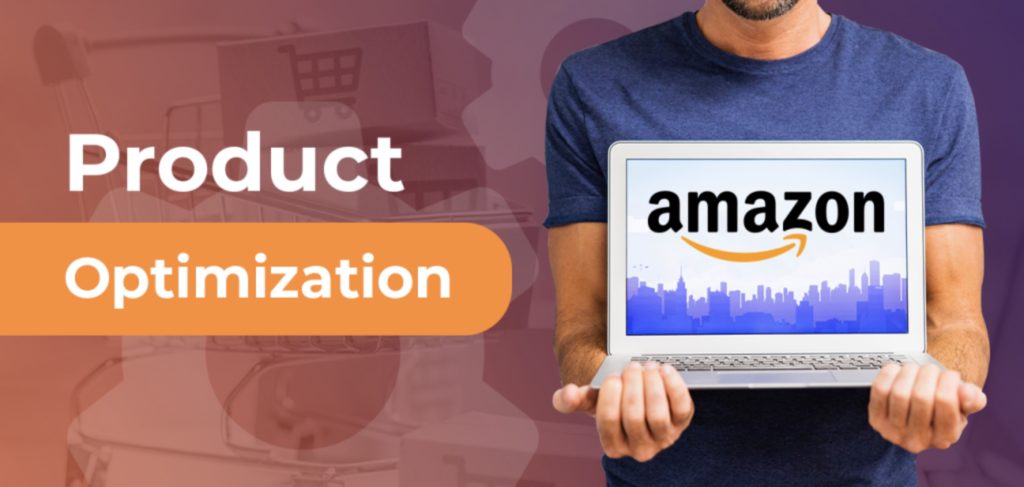
A catchy, well written, and SEO optimized Product listing is an essential tool used to improve conversion rate and help Amazon’s A9 algorithm rank our product against most relevant and targeted keywords. Without an optimized listing that has keywords embedded in the title, bullet points and description, it will be difficult to rank the product on its target keywords.
Second point: It is most important for getting external traffic, as mostly we pay money to get someone to our listing. And if a buyer clicks on our product and don’t buy, then definitely it’s a big loss of money. The customer may even pass on to buy from our competitors, which is also another problem. Amazon product page should be set up to attract new customers, and convert shoppers into sales.
𝗠𝗮𝗷𝗼𝗿 𝗦𝘁𝗲𝗽𝘀 𝗳𝗼𝗿 𝗟𝗶𝘀𝘁𝗶𝗻𝗴 𝗼𝗽𝘁𝗶𝗺𝗶𝘇𝗮𝘁𝗶𝗼𝗻 𝗮𝗿𝗲:
𝟭. 𝗞𝗲𝘆𝘄𝗼𝗿𝗱 𝗼𝗽𝘁𝗶𝗺𝗶𝘇𝗮𝘁𝗶𝗼𝗻
𝟮. 𝗢𝗽𝘁𝗶𝗺𝗶𝘇𝗲 𝗬𝗼𝘂𝗿 𝗟𝗶𝘀𝘁𝗶𝗻𝗴 𝗰𝗼𝗽𝘆
𝟯. 𝗜𝗺𝗮𝗴𝗲𝘀 𝗼𝗽𝘁𝗶𝗺𝗶𝘇𝗮𝘁𝗶𝗼𝗻
Before spending anything on paid ads, analyze these three areas and make sure they are fully optimized.
1. 𝗞𝗲𝘆𝘄𝗼𝗿𝗱 𝗼𝗽𝘁𝗶𝗺𝗶𝘇𝗮𝘁𝗶𝗼𝗻 𝘀𝘁𝗿𝗮𝘁𝗲𝗴𝘆:
- Run a Cerebro search for your ASIN (if you’re optimizing an existing listing) or your (perceived) top competitor’s ASIN.
- Filter Organic Rank 1-40, then Sort by Search Volume to only get high search volume, relevant keywords for the product on top.
- Click on the link (highlighted by the arrow) to open a keyword search on Amazon and identify if products similar to your own appear in the top 10. Select keywords that have high organic and sponsored ranks.
- The keyword with the highest relevancy and highest Search Volume will be your main keyword.
𝗪𝗵𝗲𝗻 𝘆𝗼𝘂 𝗼𝗽𝘁𝗶𝗺𝗶𝘇𝗲 𝘆𝗼𝘂𝗿 𝗹𝗶𝘀𝘁𝗶𝗻𝗴, 𝗹𝗼𝗼𝗸 𝗳𝗼𝗿 𝘁𝗵𝗲𝘀𝗲 𝗰𝗼𝗺𝗺𝗼𝗻 𝗺𝗶𝘀𝘁𝗮𝗸𝗲𝘀:
Keywords with high volume but low relevance:
- it’s easy to look at a high-volume keyword and start drooling over the sales you might get. But you need to ensure it’s actually a relevant buying keyword for your product. Ranking for a keyword doesn’t matter if you don’t get any sales out of it. Only target keywords that could realistically lead to a sale for your product.
- Over-competitive keywords:
The problem with high-volume keywords is that everyone is trying to rank for them. Sometimes, the keywords you want to go after are dominated by entrenched competitors (big brands, products with a ton of reviews). In this case, look for keyword variations (“blender” vs “food processor”, for example) that may have less search volume, but lower competition, and consider prioritizing this keyword. - Missing long-tail keywords:
Long-tail keywords are search terms containing several words something like “leather jackets for women”. These keywords often have low search volume but are hyper-relevant and high-intent. Meaning, someone searching for this is ready to make a purchase today. Many sellers don’t consider long-tail keywords, because of the low search volume. But these are often the best keywords for driving sales. Even better, because your competitors may be ignoring them, this is where the most opportunities are for your audit.
𝟮. 𝗢𝗽𝘁𝗶𝗺𝗶𝘇𝗲 𝗬𝗼𝘂𝗿 𝗟𝗶𝘀𝘁𝗶𝗻𝗴 𝗖𝗼𝗽𝘆:
Optimize your product listing copy to convince people to buy. Make sure your title, bullets, and product description are readable and easy to skim, and focus on the benefits of your product, not just features. An important part of Amazon listing optimization is combining keyword coverage with copy optimized to convert. Ideally, your product listing should be readable, scannable (no big walls of text), and convincing. Someone who lands on your product page hasn’t yet made up their mind on whether to buy your product or not. Your job is to convince them.
✓ 𝒀𝒐𝒖𝒓 𝒑𝒓𝒐𝒅𝒖𝒄𝒕 𝒕𝒊𝒕𝒍𝒆 𝒎𝒖𝒔𝒕 𝒆𝒙𝒑𝒍𝒂𝒊𝒏 𝒘𝒉𝒂𝒕 𝒚𝒐𝒖𝒓 𝒑𝒓𝒐𝒅𝒖𝒄𝒕 𝒊𝒔 𝒂𝒏𝒅 𝒊𝒕 𝒔𝒉𝒐𝒖𝒍𝒅 𝒊𝒏𝒄𝒍𝒖𝒅𝒆 𝒕𝒉𝒆 𝒎𝒂𝒊𝒏 𝒌𝒆𝒚𝒘𝒐𝒓𝒅𝒔 𝒚𝒐𝒖 𝒘𝒂𝒏𝒕 𝒕𝒐 𝒓𝒂𝒏𝒌 𝒇𝒐𝒓 𝒄𝒐𝒔 𝒕𝒊𝒕𝒍𝒆 𝒄𝒂𝒓𝒓𝒊𝒆𝒔 𝒕𝒉𝒆 𝒎𝒐𝒔𝒕 𝒘𝒆𝒊𝒈𝒉𝒕 𝒊𝒏 𝑨𝒎𝒂𝒛𝒐𝒏 𝑺𝑬𝑶.
✓ 𝑨𝒎𝒂𝒛𝒐𝒏 𝒂𝒍𝒍𝒐𝒘𝒔 𝒖𝒑𝒕𝒐 𝒇𝒊𝒗𝒆 𝒃𝒖𝒍𝒍𝒆𝒕 𝒑𝒐𝒊𝒏𝒕𝒔 𝒊𝒏 𝒕𝒉𝒆 𝒍𝒊𝒔𝒕𝒊𝒏𝒈. 𝑬𝒙𝒑𝒍𝒂𝒊𝒏 𝒂𝒍𝒍 𝒕𝒉𝒆 𝒎𝒂𝒊𝒏 𝒇𝒆𝒂𝒕𝒖𝒓𝒆𝒔 𝒘𝒉𝒚 𝒄𝒖𝒔𝒕𝒐𝒎𝒆𝒓 𝒔𝒉𝒐𝒖𝒍𝒅 𝒃𝒖𝒚 𝒚𝒐𝒖𝒓 𝒑𝒓𝒐𝒅𝒖𝒄𝒕. 𝑬𝒗𝒆𝒓𝒚 𝒑𝒓𝒐𝒅𝒖𝒄𝒕 𝒊𝒔 𝒅𝒊𝒇𝒇𝒆𝒓𝒆𝒏𝒕 𝒔𝒐 𝒅𝒐𝒆𝒔 𝒃𝒖𝒍𝒍𝒆𝒕 𝒑𝒐𝒊𝒏𝒕𝒔.
✓ 𝑬𝒙𝒑𝒍𝒂𝒊𝒏 𝒕𝒉𝒆 𝒅𝒊𝒓𝒆𝒄𝒕𝒊𝒐𝒏𝒔, 𝒔𝒑𝒆𝒄𝒊𝒂𝒍 𝒊𝒏𝒔𝒕𝒓𝒖𝒄𝒕𝒊𝒐𝒏𝒔 𝒂𝒏𝒅 𝒘𝒉𝒂𝒕 𝒊𝒏𝒄𝒍𝒖𝒅𝒆𝒅 𝒊𝒏 𝒕𝒉𝒆 𝒑𝒂𝒄𝒌𝒂𝒈𝒆 𝒊𝒏 𝒅𝒆𝒔𝒄𝒓𝒊𝒑𝒕𝒊𝒐𝒏. 𝑼𝒔𝒆 𝑯𝑻𝑴𝑳 𝒇𝒐𝒓𝒎𝒂𝒕 𝒕𝒐 𝒎𝒂𝒌𝒆 𝒅𝒆𝒔𝒄𝒓𝒊𝒑𝒕𝒊𝒐𝒏 𝒆𝒚𝒆-𝒄𝒂𝒕𝒄𝒉𝒊𝒏𝒈.
𝟯. 𝗜𝗺𝗮𝗴𝗲 𝗼𝗽𝘁𝗶𝗺𝗶𝘇𝗮𝘁𝗶𝗼𝗻:
- 7 images must be used in our listing.
- First image is the main image of our product.
- 2nd, 3rd and 4th images must be lifestyle images.
- 5th and 6th images must be infographic images (related to features of the product).
- 7th image must show size and dimensions of the product.
- Listings that are missing a main image will not appear in search or browse until you fix the listing.
- Choose images that are clear, information-rich and attractive.
𝙄𝙢𝙖𝙜𝙚𝙨 𝙢𝙪𝙨𝙩 𝙢𝙚𝙚𝙩 𝙩𝙝𝙚 𝙛𝙤𝙡𝙡𝙤𝙬𝙞𝙣𝙜 𝙧𝙚𝙦𝙪𝙞𝙧𝙚𝙢𝙚𝙣𝙩𝙨:
- Products must fill at least 85% of the image.
- Image must show only the product that is for sale, with few or no props and with no logos, watermarks or inset images.
- Images may only contain text that is a part of the product.
- Main images must have a pure white background, must be a photo (not a drawing) and must not contain excluded accessories.
- Images must be at least 1000 pixels on the longest side and at least 500 pixels on the shortest side to be zoom-able.
- Images must not exceed 10000 pixels on the longest side. JPEG is the preferred image format, but you also may use TIFF and GIF files.
𝑰𝒎𝒂𝒈𝒆𝒔 𝒂𝒓𝒆 𝒑𝒂𝒓𝒕𝒊𝒄𝒖𝒍𝒂𝒓𝒍𝒚 𝒊𝒎𝒑𝒐𝒓𝒕𝒂𝒏𝒕 𝒐𝒏 𝒎𝒐𝒃𝒊𝒍𝒆 𝒃𝒆𝒄𝒂𝒖𝒔𝒆 𝒕𝒉𝒆𝒚 𝒕𝒂𝒌𝒆 𝒖𝒑 𝒕𝒉𝒆 𝒃𝒖𝒍𝒌 𝒐𝒇 𝒕𝒉𝒆 𝒔𝒄𝒓𝒆𝒆𝒏.
𝑴𝒐𝒃𝒊𝒍𝒆 𝒄𝒖𝒔𝒕𝒐𝒎𝒆𝒓𝒔 𝒔𝒆𝒆 𝒋𝒖𝒔𝒕 𝒕𝒉𝒆 𝒕𝒊𝒕𝒍𝒆 𝒂𝒏𝒅 𝒊𝒎𝒂𝒈𝒆𝒔 𝒘𝒉𝒆𝒏 𝒕𝒉𝒆𝒚 𝒄𝒍𝒊𝒄𝒌 𝒕𝒐 𝒚𝒐𝒖𝒓 𝒑𝒓𝒐𝒅𝒖𝒄𝒕 𝒍𝒊𝒔𝒕𝒊𝒏𝒈. 𝑴𝒐𝒔𝒕 𝒎𝒐𝒃𝒊𝒍𝒆 𝒔𝒉𝒐𝒑𝒑𝒆𝒓𝒔 𝒘𝒊𝒍𝒍 𝒔𝒘𝒊𝒑𝒆 𝒕𝒉𝒓𝒐𝒖𝒈𝒉 𝒕𝒉𝒆 𝒊𝒎𝒂𝒈𝒆𝒔 𝒃𝒆𝒇𝒐𝒓𝒆 𝒔𝒄𝒓𝒐𝒍𝒍𝒊𝒏𝒈 𝒅𝒐𝒘𝒏. 𝑺𝒐 𝒊𝒇 𝒚𝒐𝒖𝒓 𝒊𝒎𝒂𝒈𝒆𝒔 𝒂𝒓𝒆 𝒏𝒐𝒕 𝒈𝒐𝒐𝒅, 𝒎𝒐𝒔𝒕 𝒑𝒆𝒐𝒑𝒍𝒆 𝒘𝒊𝒍𝒍 𝒉𝒊𝒕 𝒕𝒉𝒆 𝒃𝒂𝒄𝒌 𝒃𝒖𝒕𝒕𝒐𝒏. 𝑭𝒊𝒏𝒂𝒍𝒍𝒚, 𝒎𝒂𝒌𝒆 𝒔𝒖𝒓𝒆 𝒚𝒐𝒖𝒓 𝒊𝒎𝒂𝒈𝒆𝒔 𝒈𝒊𝒗𝒆 𝒂𝒔 𝒎𝒖𝒄𝒉 𝒅𝒆𝒕𝒂𝒊𝒍 𝒕𝒐 𝒚𝒐𝒖𝒓 𝒑𝒓𝒐𝒅𝒖𝒄𝒕 𝒂𝒔 𝒑𝒐𝒔𝒔𝒊𝒃𝒍𝒆. 𝑴𝒂𝒌𝒆 𝒊𝒕 𝒔𝒐 𝒕𝒉𝒆𝒓𝒆 𝒂𝒓𝒆 𝒏𝒐 𝒔𝒖𝒓𝒑𝒓𝒊𝒔𝒆𝒔 𝒘𝒉𝒆𝒏 𝒕𝒉𝒆 𝒄𝒖𝒔𝒕𝒐𝒎𝒆𝒓 𝒈𝒆𝒕𝒔 𝒕𝒉𝒆 𝒑𝒓𝒐𝒅𝒖𝒄𝒕.
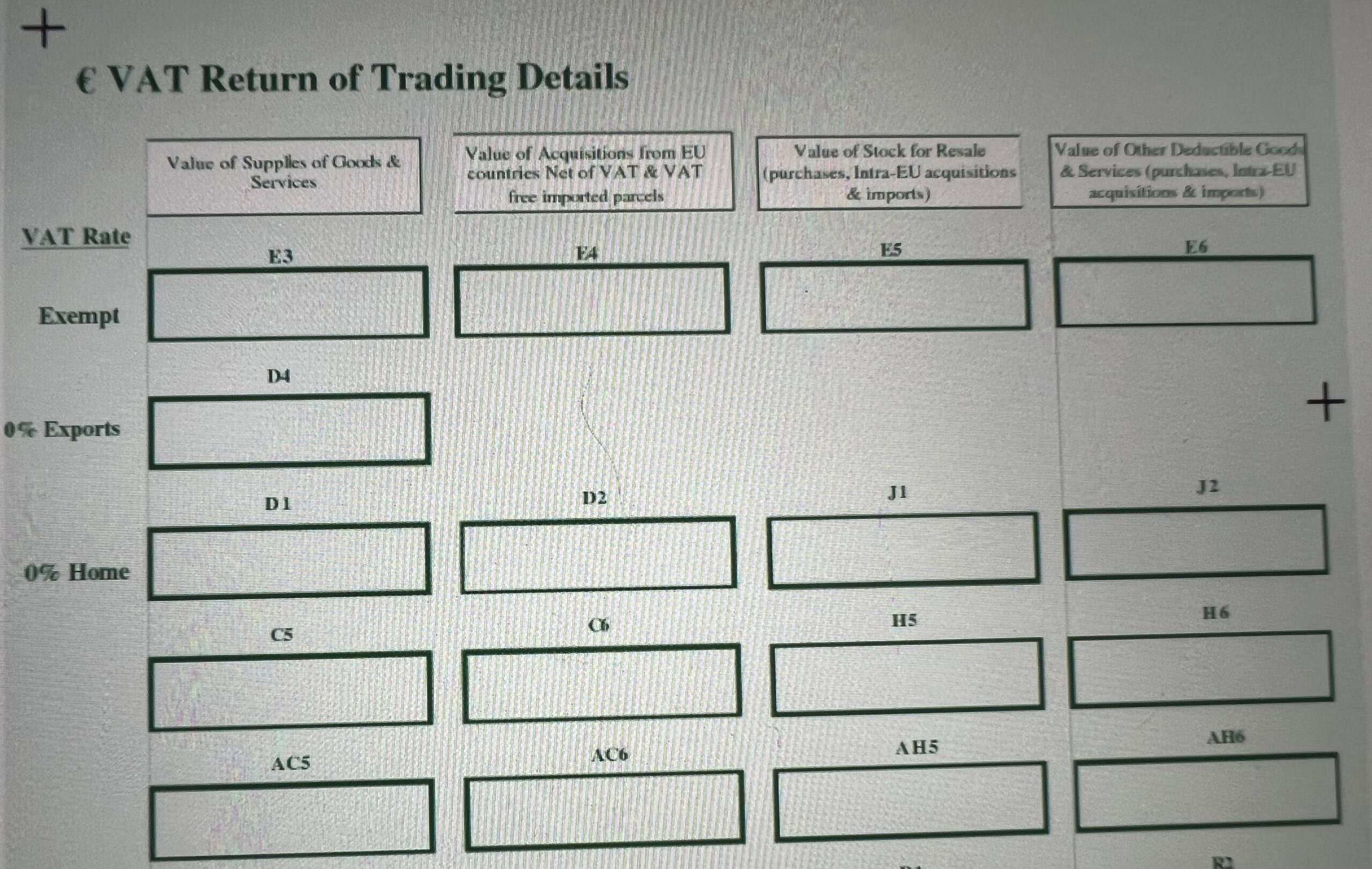
Many Amazon sellers are reaching out to me asking for help with Postponed VAT Accounting for their businesses. This article outlines the most important information about the scheme, who can use it, and how to fill in your customs declaration and VAT Return.
How does postponed VAT accounting work?
After the UK officially left the EU on January 1st 2021, importers were required to pay VAT on goods entering the UK if the value of the goods exceeded a certain threshold. The UK government created the postponed VAT accounting scheme to help businesses avoid a negative impact on their cash flow by delaying the VAT payment.
Without the postponed VAT scheme, commercial goods over £135 entering the UK would be held at customs until the VAT was paid. Now, businesses can delay the payment by recording the import VAT on their quarterly VAT Return instead of paying it immediately.
Who can postpone VAT?
To be eligible for the postponed VAT accounting scheme, you must be a UK VAT registered business who imports goods for business use into the UK.
It is an optional scheme, so you can pay the VAT immediately if you wish. You also do not need approval to postpone the VAT, you can start using this system immediately if you are VAT registered.
For businesses in Great Britain, this scheme applies to imports from anywhere outside the UK.
Since Northern Ireland is still part of the EU VAT area, the postponed VAT scheme does not apply to imports into Northern Ireland from the EU. In these cases, the reverse charge will still apply. For imports from anywhere else in the world, you can postpone the VAT.
Furthermore, sales between Northern Ireland and Great Britain are considered domestic transactions and are not eligible under the scheme. For these sales, the standard UK VAT procedure will apply.
Postponed VAT on your customs declaration
If you decide to use the postponed VAT accounting scheme, you will need to declare this on your customs declaration. Since customs declarations can be complex, most businesses hire a transporter or customs expert to complete them.
Here are a few fields that must be completed on the customs declaration if you wish to postpone the VAT:
- Your “GB” or “XI” (Northern Ireland) EORI number
- Your UK VAT number (VRN)
- Box 47e (method of payment) stating that you wish to postpone the VAT payment – use code “G”
If your customs declaration is incorrect or missing the above information, you may experience delays or penalties. Make sure that you keep records of your customs or VAT declarations for at least 6 years.
Postponed VAT on your VAT Return
If you have postponed VAT on your imports, you will need to declare the VAT on your VAT Return. You can download your VAT statement which includes the deferred VAT payments from a specific period from the CDS customs system. Once you have your statement, you can include those figures in the following boxes on your VAT Return:
- Box 1: Include the VAT due from postponed VAT accounting
- Box 4: Include the VAT reclaimed on imports from the postponed VAT scheme
- Box 7: Include the ex-VAT value of imported goods
If you choose to not use the postponed VAT scheme for some imports, you will only enter the figures in boxes 4 and 7.
It is important to correctly record the postponed VAT on your VAT Return in order to avoid penalties and mistakes. Since processes change quickly, you should seek the most up to date advice from the UK Government website.
I hope you found this article helpful. If you are experiencing issues with your Amazon Seller Account and your Seller Account already received a warning or is under a review, I can help you resolve the matter.
If you would like to hire me to privately assist you, feel free to subscribe and reach out through my dedicated assistance page at www.onlyfans.com/kikaangelic, where I provide support with Amazon related matters in exchange for a small $24.99 fee. Alternatively, you can post into my free public discussion forum for Amazon Sellers, where I will answer your question.
To stay in touch, feel free to join and post into my large Amazon Seller Performance – Friendly Advice – Worldwide Facebook group, where you will be very welcome.
Many Amazon sellers recently started trading stocks and crypto currencies, hoping to diversify their income, which is a very good idea with all the uncertainty which comes with the platform. For this reason, we launched a new Facebook group, Crypto Arbitrage Income (Bitcoin, Crypto, Altcoins, Blockchain, Trading) – feel free to join us and forget about the troubles of selling on Amazon for a moment!
Additionally, here you can watch my YouTube video, where I am addressing everything you need to know about Seller Identity Verification and how to pass it:
Comparison of Value Recovery Options on Amazon: Refurbishment vs. Liquidation
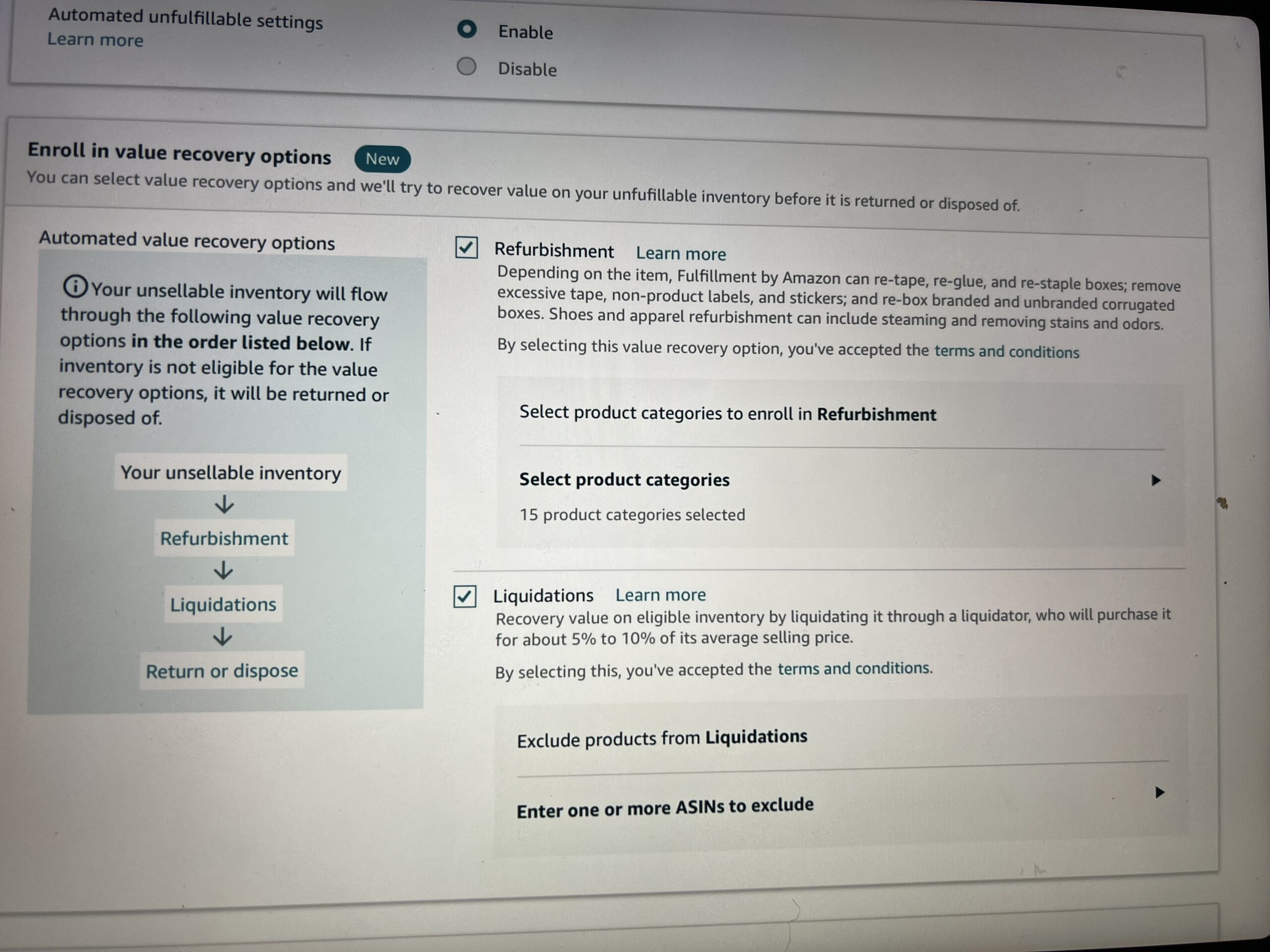
As an Amazon seller, one of the challenges you may encounter is dealing with excess inventory or unsellable customer returns. To mitigate the financial impact of these situations, Amazon offers value recovery options such as refurbishment and liquidation. In this article, I will be explaining the differences between refurbishment and liquidation and help you make informed decisions about which option suits your business needs.
Refurbishment
Refurbishment refers to the process of repairing, reconditioning, and restoring a product to a like-new condition before reselling it. These products undergo a thorough inspection to identify any defects or malfunctions. Once identified, these issues are addressed through repairs or component replacements. Additionally, the product is extensively tested to ensure it meets quality standards.
To enhance the cosmetic appearance, refurbishment may involve cleaning, polishing, and replacing damaged parts. The goal is to present the product as close to new condition as possible. They are also repackaged in suitable packaging to ensure a professional presentation.
Advantages:
- Higher Potential Profits: Refurbished products generally command higher prices compared to liquidated items due to their improved condition.
- Customer Trust: Offering a refurbished option can help build trust with buyers who seek high-quality, affordable products.
- Sustainable Practice: By refurbishing and reselling products, you contribute to reducing waste and promoting a more sustainable business model.
Liquidation
Liquidation refers to the process of selling excess inventory or customer returns in bulk, usually to third-party buyers or resellers. It involves selling a large quantity of products at a discounted price, typically in “as-is” condition. The items may have minor defects or cosmetic imperfections that make them unfit for refurbishment.
Several online platforms specialize in liquidation sales, connecting sellers with buyers interested in purchasing merchandise at a reduced price. These platforms handle logistics, facilitate auctions, or offer fixed-price listings.
Advantages:
- Quick Inventory Clearance: Liquidation allows you to rapidly offload excess inventory, freeing up valuable storage space and reducing holding costs.
- Speedy Cash Flow: Selling items in bulk provides an immediate influx of capital, which can be useful for reinvesting in new inventory or covering expenses.
- Simplified Process: Liquidation platforms streamline the selling process, often handling logistics, payments, and buyer interactions.
When faced with excess inventory or customer returns on Amazon, it’s essential to evaluate your value recovery options. Refurbishment allows you to repair and restore products to a like-new condition, catering to customers seeking quality at a slightly reduced price. On the other hand, liquidation offers a faster solution for clearing large quantities of products, providing quick cash flow but at a lower price point. Assess your business requirements, product conditions, and customer demands to determine which option aligns best with your goals. Remember, each situation may call for a different strategy, so understanding the nuances of refurbishment and liquidation empowers you to make informed decisions and optimize your selling potential on Amazon.
I hope you found this article helpful. If you are experiencing issues with your Amazon Seller Account and your Seller Account already received a warning or is under a review, I can assist you and help you resolve the matter.
In order to receive a professional advice and get help with your Amazon issue, feel free to subscribe and reach out through my dedicated assistance help page at www.onlyfans.com/kikaangelic, where I provide help with Amazon related matters in exchange for a small $24.99 fee.
If you have an Amazon-related issue, feel free to join and post into my large Amazon Seller Performance – Friendly Advice – Worldwide Facebook group, where you will be very welcome.
Many Amazon sellers recently started trading stocks and crypto currencies, hoping to diversify their income, which is a very good idea with all the uncertainty which comes with the platform. For this reason, we launched a new Facebook group, Crypto Arbitrage Income (Bitcoin, Crypto, Altcoins, Blockchain, Trading) – feel free to join us and forget about the troubles of selling on Amazon for a moment!
Additionally, here you can watch my YouTube video, where I am addressing everything you need to know about Seller Identity Verification and how to pass it:
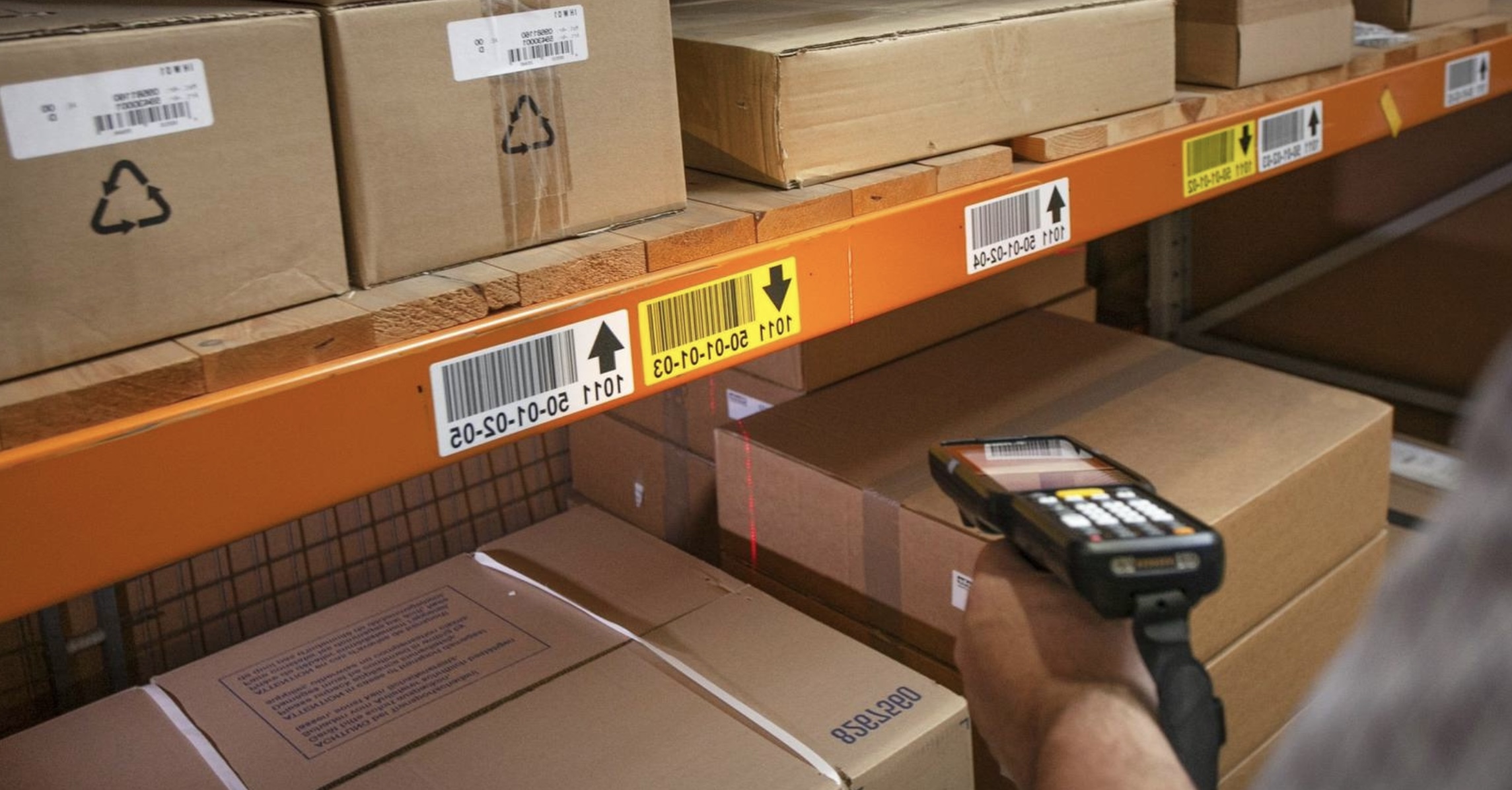
Today, I want to shed some light on an important topic that can have a significant impact on our selling journey: the difference between FNSKU barcodes and manufacturer barcodes on Amazon. Understanding this distinction is crucial for ensuring smooth operations and compliance with Amazon’s requirements.
Let’s start with the basics. FNSKU stands for Fulfillment Network Stock Keeping Unit. It is a unique identifier assigned by Amazon to each individual product listing in their fulfillment network. When we send our products to Amazon’s warehouses, they require each item to be labeled with an FNSKU barcode.
On the other hand, manufacturer barcodes, such as UPC (Universal Product Code) or EAN (European Article Number), are the barcodes typically found on products when they are manufactured. These barcodes are assigned by the manufacturer to identify a specific product globally. They are used by retailers and marketplaces worldwide.
Now, you might be wondering why Amazon requires us to use FNSKU barcodes instead of manufacturer barcodes. The primary reason is to ensure accurate tracking and inventory management within Amazon’s vast fulfillment network. When we use FNSKU barcodes, Amazon can easily identify and track each unit of our product as it moves through their system. This allows for efficient inventory management, order fulfillment, and customer service.
Moreover, FNSKU barcodes help protect our listings from potential hijackers or counterfeiters. By using unique FNSKU labels, we can maintain control over our inventory and ensure that customers receive genuine products. This adds an extra layer of security and trust to our business operations.
So, how do we apply FNSKU labels to our products? When we create a new product listing on Amazon, we are provided with FNSKU codes that can be printed as labels and affixed to each unit. Alternatively, we can opt for Amazon’s FBA Label Service, where they apply the FNSKU labels for a fee. It is important to note that FNSKU labels should cover or replace any existing manufacturer barcodes to ensure accurate tracking within Amazon’s system.
Now that we understand the importance of FNSKU barcodes, let’s address a common question: What about products that already have manufacturer barcodes? In such cases, Amazon requires us to either cover the manufacturer barcode with an FNSKU label or have a unique product identifier (such as a UPC or EAN) registered under our Amazon account. By registering the unique product identifier, we can leverage the “Stickerless, Commingled Inventory” program, which allows Amazon to track and identify our units without the need for FNSKU labels. However, it is worth noting that using FNSKU labels provides better control and visibility over our inventory.
I hope you found this article helpful. If you are experiencing issues with your Amazon Seller Account and your Seller Account already received a warning or is under a review, I can assist you and help you resolve the matter.
In order to receive a professional advice and get help with your Amazon issue, feel free to subscribe and reach out through my dedicated assistance help page at www.onlyfans.com/kikaangelic, where I provide help with Amazon related matters in exchange for a small $24.99 fee.
If you have an Amazon-related issue, feel free to join and post into my large Amazon Seller Performance – Friendly Advice – Worldwide Facebook group, where you will be very welcome.
Many Amazon sellers recently started trading stocks and crypto currencies, hoping to diversify their income, which is a very good idea with all the uncertainty which comes with the platform. For this reason, we launched a new Facebook group, Crypto Arbitrage Income (Bitcoin, Crypto, Altcoins, Blockchain, Trading) – feel free to join us and forget about the troubles of selling on Amazon for a moment!
Additionally, here you can watch my YouTube video, where I am presenting you several secret tips about appealing Amazon Seller Account suspensions (don’t be confused by the opening of the video, where I am enjoying a vacation – it’s a part of the story):
-

 All Blogs & Seller News2 years ago
All Blogs & Seller News2 years agoYou would never think this could get you suspended! Amazon continues its wave of Buyer Account closures, learn what is new!
-

 Amazon Seller News3 years ago
Amazon Seller News3 years agoMeltable inventory restrictions start April 15, 2021
-

 All Blogs & Seller News2 years ago
All Blogs & Seller News2 years agoWatch out! Amazon is mercilessly cracking down on dropshipping!
-

 All Blogs & Seller News1 year ago
All Blogs & Seller News1 year agoHow to submit WEEE registration numbers on Amazon and what does it mean?
-

 All Blogs & Seller News2 years ago
All Blogs & Seller News2 years agoWhy isn’t Amazon doing anything to help third party sellers affected by the situation in Ukraine?
-
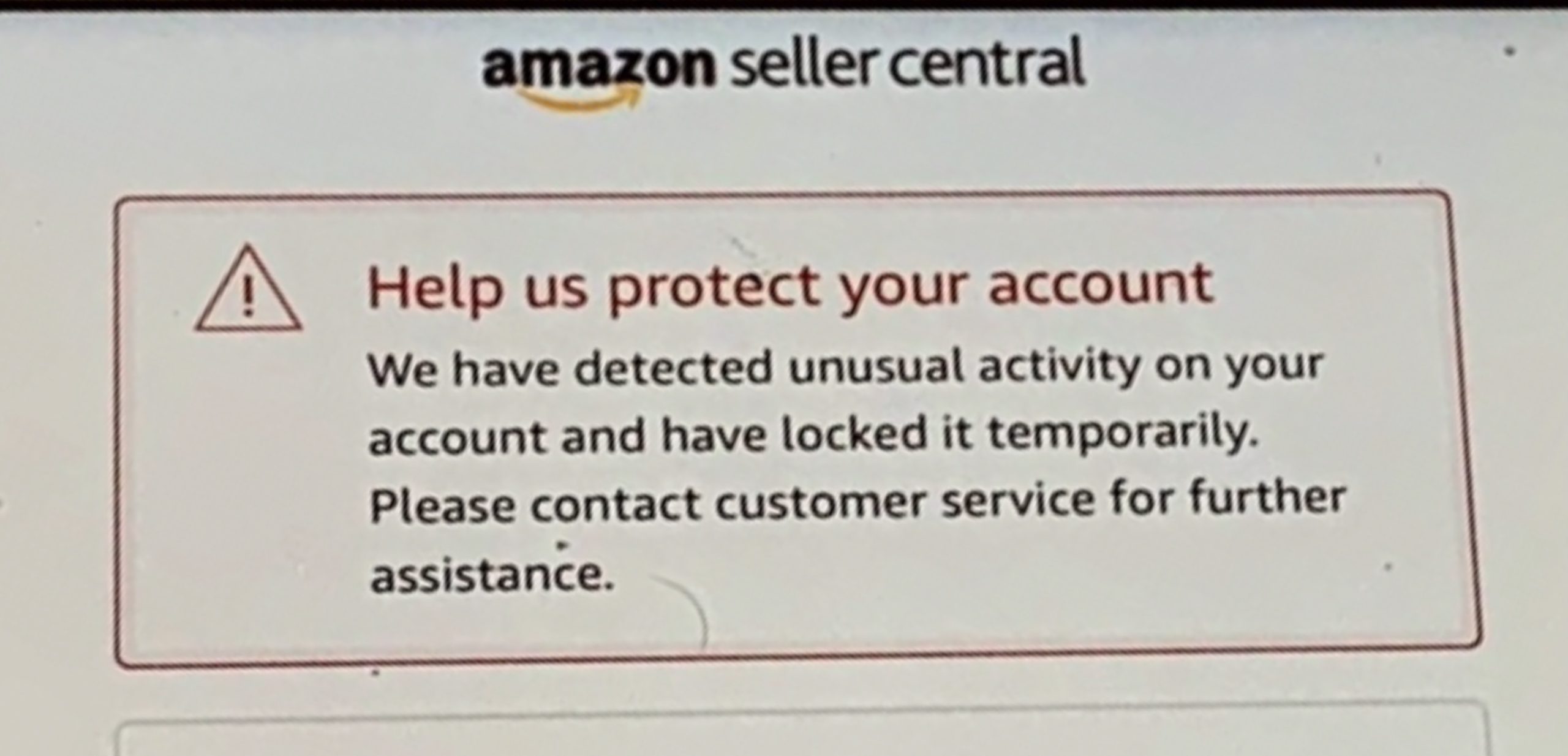
 Amazon Seller News2 years ago
Amazon Seller News2 years agoWhat to do when your Amazon Seller Account gets placed on a hold?
-

 Amazon Seller News2 years ago
Amazon Seller News2 years agoWhat is the difference between FNSKU and SKU?
-

 Amazon Seller News3 years ago
Amazon Seller News3 years agoFind out if any of your Amazon listings include prohibited keywords



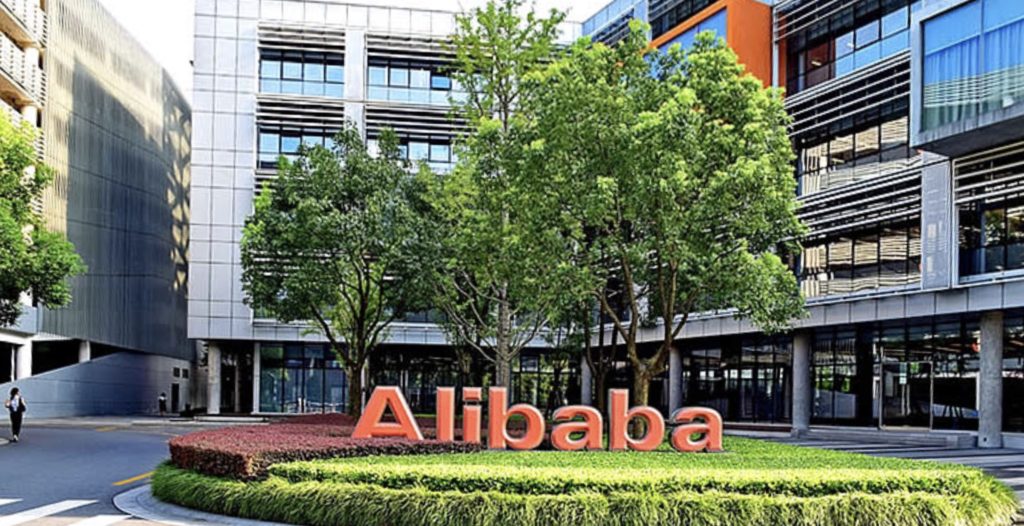










You must be logged in to post a comment Login